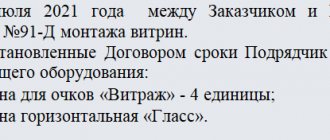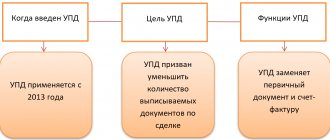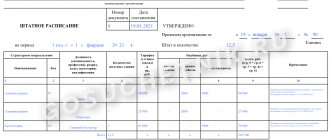Legal requirements
The structure of the document at the legislative level does not provide for strict standards, with the exception of the act of acceptance of completed construction work in the special form KS-2.
The wording delineates tax legislation, implying:
- an act of completed work, if a mandatory attribute is the use and recording of write-offs of material assets that accompany the execution process and have a value expression;
- an act of provision of services, if the transfer of physical objects does not occur and materials are not consumed during the execution process.
From the point of view of the Tax Code, the wording distinguishes between the use of the material component and exclusively labor resources, including the intellectual and physical potential of performers. A unified form in addition to KS-2 and the KS-3 certificate is not established by law, and the Civil Code does not distinguish between the concepts of “performance of work” and “provision of services.”
A standard document is drawn up on the basis of an agreement providing for a delivery and acceptance form, taking into account intermediate stages. In the absence of an agreement, some controllers consider the signed act to be invalid, while others recognize the conclusion of the agreement orally.
A completed AVR of any form is considered the basis for:
- transfer of ownership;
- payment for a certain contractual stage or complete completion of the transaction;
- transfer of commercial risks;
- reflection of the transaction in accounting and tax accounting.
- Non-disclosure agreement
If the contract reflects the obligations assumed by the parties, then the certificate of completion, the template of which is developed by the contractor, reflects the fact of fulfillment of contractual obligations.
The signing of a document by the parties is considered evidence of the absence of mutual claims, and if disagreements arise, it is used in the courts to confirm controversial issues.
Why sign such an act?
This document reflects all the work performed, its full scope and cost, start and end date. It can be considered as a form of progress report. This is not a separate document, it is an annex to the contract agreement under which the work was performed.
The acceptance certificate refers to the primary accounting documentation (Federal Law No. 402). All conditions for drawing up the act, including the tax side of accounting, are reflected in Art. 752 of the Civil Code of the Russian Federation.
Signing the act serves as proof that:
- all terms of the contract are met;
- the work is completed;
- the parties have no claims against each other;
- the customer is satisfied with the services received and agrees to pay for them.
The fact that the act has been drawn up is not proof that the work complies with the terms of the contract; this fact is certified by the customer’s signature.
After signing, the document acquires legal force and is used to record costs and work in the financial statements. In addition, it serves as a guarantee of the protection of the rights and interests of the parties in the event of disputes and conflicts in the future (Article 753 of the Civil Code of the Russian Federation).
In addition to the two parties, investors, a subcontractor and other interested parties may be present when drawing up the act.
You can download the act of acceptance of completed work by individuals here.
Sample act of acceptance of work performed by individuals
Compilation rules
Usually, when drawing up an act, standard legally established forms are used, although they can be written by hand in free form. It is possible to make the form yourself; some enterprises develop their own company letterhead. If necessary, it can be downloaded from the Internet.
There are the following types of unified forms for the transfer and acceptance certificate:
- KS-2. Contains information about the work.
- KS-3. Reflects the financial side of the agreement.
Required information
Regardless of how the act is drawn up, its text must contain the following information:
- number, according to the numbering in the accounting documentation, and the date of its signing;
- full names and details of the parties to the agreement;
- number and details of the agreement on the basis of which the parties cooperate and which is the basis for drawing up the act;
- service or work provided under a contract: name and expression in monetary (including VAT) and in kind terms;
- bank account number where funds for the work should be transferred;
- persons responsible for the acceptance and transfer of services and works: their full names, positions.
At the end, the signatures of all persons involved in acceptance and the seals of the parties to the agreement are affixed.
If several types of work or services are provided, it is possible to reflect this in one act by drawing up a table. If desired, a separate act is drawn up for each type of work.
The transfer and acceptance certificate is usually a two-sided document, so two copies must be signed for each party. The act is signed by representatives of both parties.
If deficiencies and shortcomings are discovered, then this should be reflected in the report, which also prescribes the need to eliminate them, the timing of the alterations and the date for drawing up the next report based on the results of the newly performed work. In this case, the customer is not obliged to pay for services.
What is the difference between a transfer and acceptance certificate and a work completion certificate?
The legislation of the Russian Federation does not clearly distinguish between these two types of documents; they carry approximately the same semantic load. In Art. 753 (clause 4) of the Civil Code of the Russian Federation states: when the results of work are delivered by the contractor and when they are accepted by the customer, both parties draw up and sign an act to this effect.
After signing the act of completed work, the parties to the contract acquire new obligations towards each other: the customer accepts the obligation to pay the remaining part of the cost of the work, if no preliminary full payment was made before the start of work. The contractor acquires a warranty (usually for a period of 2 years according to the Civil Code).
The acceptance certificate serves as confirmation that the service has been provided and its results have been transferred to the customer, that is, the parties to the agreement to which this act is an annex have fulfilled their obligations and guarantees that the parties have no claims. Its preparation is not mandatory, since it is not a separate legal document, but an annex to the agreement and has no force separately from it.
You don't have to look for the answer to your question in this long article! Write your question using the form (below), and our lawyer will call you back within 5 minutes with a free consultation.
Sample of drawing up a certificate of completion of work
A sample certificate of work and services performed must include mandatory items, despite the lack of a unified form. The standard document is drawn up in two copies that have the same legal force, since the standard provides for two parties - the customer and the contractor.
It is advisable to indicate the following information in the AVR:
- Serial number for reflection in accounting registers.
- Date of preparation of the document. If additional time is required for acceptance by the customer, then it is advisable to print a space on the form indicating the customer’s acceptance date, which serves as the moment of transfer of ownership and the date of sale.
- Details of the concluded agreement, according to the terms of which contractual obligations are fulfilled.
- Execution period indicating the start and end times.
- Volumes and specific list of work performed, reflecting the material components spent during the execution process. In particular, it is advisable to include the used components and materials in quantitative and cost terms in the certificate of completed maintenance work, which will allow the contractor to easily reflect the cost as part of tax expenses.
- Total cost including VAT. A certificate of completion of work without VAT is drawn up if:
- the executor is not a tax payer;
- the operation is preferential and is not subject to VAT;
- The territory of Russia is not recognized as the place of sale when providing intermediary services.
- Details of the parties, including full names according to the constituent documents.
- Signatures and seals of participants. A certificate of completed work for individuals does not require a seal, since a seal is not provided for citizens when entering into civil transactions.
and: In Word format: Certificate of acceptance of completed work (in Word .doc format) (35.0 KiB, 38,474 hits)
; in Excel format
Form of work completion certificate (in Excel .xls) (11.1 KiB, 15,640 hits)
If the customer avoids signing a two-sided document, then the solution for the contractor is a unilateral AVR, provided for in clause 4 of Article 753 of the Civil Code of the Russian Federation. It is advisable to draw up an appendix to the work completion report indicating the absence of claims from the customer during a certain period, and reflect a list of material costs. This can serve as evidence of fulfillment of obligations in court.
: Sample act of completion of work (in Word) (37.0 KiB, 13,136 hits)
Where to find a sample contract for 2021
A contract with an individual of the 2021 model (or a civil contract) is quite often used by businessmen if it is necessary to hire an employee to perform a certain amount of work, but there is no need to conclude an employment contract with him.
When concluding a GPC agreement with a “physicist”, do not forget about the risks of his retraining for labor. Explanations from ConsultantPlus experts, for example, an analytical review of recent judicial practice, will help you minimize these risks. If you do not already have access to this legal system, a full access trial is available for free.
Particular attention should be paid when drawing up a contract with a foreign citizen of the 2021 model - it is important to take into account all the nuances. To make the task easier, we present you with a form for such a document.
Look for the nuances of a contract with an individual in the article “Civil contract with an individual.”
Read about the specifics of taxing payments to individuals under contract agreements with insurance premiums in the articles “Contract agreement and insurance premiums: nuances of taxation” and “Insurance premiums under the GPA”.
These types of agreements are also widely in demand among entrepreneurs; you can download samples of them by clicking on the link:
- contract for the provision of services, sample 2021;
- construction contract sample 2021.
Delivery and acceptance of construction and installation works
During construction, reconstruction, major repairs, installation and dismantling of equipment, Article 740 of the Civil Code of the Russian Federation requires the conclusion of a contract agreement. After completion of construction, the contractor must submit the results and accept them to the customer. If the work involves several stages, then an interim certificate of completion of work is drawn up for each.
Standard forms KS-2 and KS-3 are not classified as mandatory, but are recommended due to the content of the necessary details and familiarity with the construction market.
To avoid problems during inspections in KS-2, it is advisable to indicate:
- complete and accurate information about the contractor and the customer;
- place of construction and installation works;
- quantity, timing and scope of each stage of implementation.
Form KS-3 contains information regarding the cost of completing each stage and the costs incurred. The certificate is drawn up on the basis of the AVR KS-2, which contains the final results and is the final report of the work performed. The KS-3 certificate includes information from the beginning of the current year, since the compilation is carried out on an accrual basis, which is convenient when the construction process is long.
The inconvenience of using standard forms arises when a third party is involved, since the forms require two participants. The solution is a three-way AVR between the general contractor, subcontractor and customer, drawn up in any form indicating the details of each party.
Types of APP works
The drawing up and signing of the act is carried out according to the generally accepted procedure and, despite the differences depending on the type of work, all acceptance acts must contain certain information, without which this document is not valid.
For repairs
If it is necessary to carry out repair work on the premises, the parties sign a corresponding agreement. After this, the premises are transferred to the contractor under the act to carry out repair work there.
The certificate of completion of work records the fact that repair work has been completed and the absence of claims from the customer. It includes the terms of the contract and the performance of work, the obligations of the parties and liability in case of violation of the terms. Work is accepted according to the acceptance certificate.
For construction
Drawing up an act of acceptance and transfer of construction work is important in the construction industry when there is a need to note the fact of construction work at the site, as well as electrical installation work.
To sign the act, the object must: comply with building codes and terms of the contract. If there are shortcomings that prevent the use of the object for the purposes for which it is intended, and these shortcomings cannot be eliminated without the involvement of third organizations, then the customer has the right not to accept the object and not to sign the act. Usually in this case the unified form KS-2 is used.
For design
Design work refers to services, so this should be stated in the title of the act. For example, “Act for services performed - Design work on the facility...”. Sometimes KS-2 forms may be used.
The design documentation itself is text and graphic documents relating to the constructive, technical, and engineering aspects of construction. They should be checked, agreed upon and, only after confirmation, an act of acceptance can be signed.
For contractors
The acceptance certificate under a contract is a confirmation of the completion and appropriate quality of work that the contractor performs on the order of the other party. The act is completed upon receipt of services and work.
The act of acceptance and transfer of work under a service contract is signed as a result of acceptance of the work results by the customer and confirmation of the fact of their transfer.
The certificate of completion of work during the provision of services is the topic of this video:
Changes in contractual terms
During the implementation process or as a result of the customer filing a claim at a number of stages, the cost may change relative to the previously signed copy of the document.
For this purpose, an adjustment report for the work performed is drawn up indicating:
- number and date of the document to which the adjustment is being made;
- changes in the pricing policy upward or downward with reference to circumstances, including a defect identified by the customer after signing the main act and accepted by the contractor;
- new total cost according to the changes made.
The date of signing by the customer is the basis for recording and adjusting the VAT amounts relative to what was previously accepted and reflected in the accounting registers by both parties to the transaction.
How to compose
The legislative act that regulates the criteria and aspects of drafting is the Civil Code of the Russian Federation. The acceptance certificate for the transfer of completed work is drawn up solely on the basis of a construction contract.
First of all, the parties draw up and sign an agreement on the need to perform a certain type of work or service.
Based on the agreement, the parties draw up an act.
The document necessarily reflects the full scope of services, repair, installation, electrical installation, and other types of work. In some cases, legal proceedings are carried out on the basis of this paper. It is with its help that an unscrupulous customer can be forced through court to pay for the services performed by the contractor.
In some cases, the deed may serve as a transfer document . This happens in 2021 when drawing up an agreement for freight and passenger transportation, transportation of windows, metal structures, building materials, and other types of food and non-food products.
ATTENTION! Drawing up an acceptance certificate for the transfer of work done is important and necessary for both parties to the contract. It has one distinctive feature. In accordance with Article 153 of the Civil Code, it cannot be interpreted as an independent document with legal force along with an agreement. Therefore, it cannot be declared invalid and unenforceable.


![My business [CPS] RU](https://belovocity.ru/wp-content/uploads/moe-delo-cps-ru-330x140.jpg)





